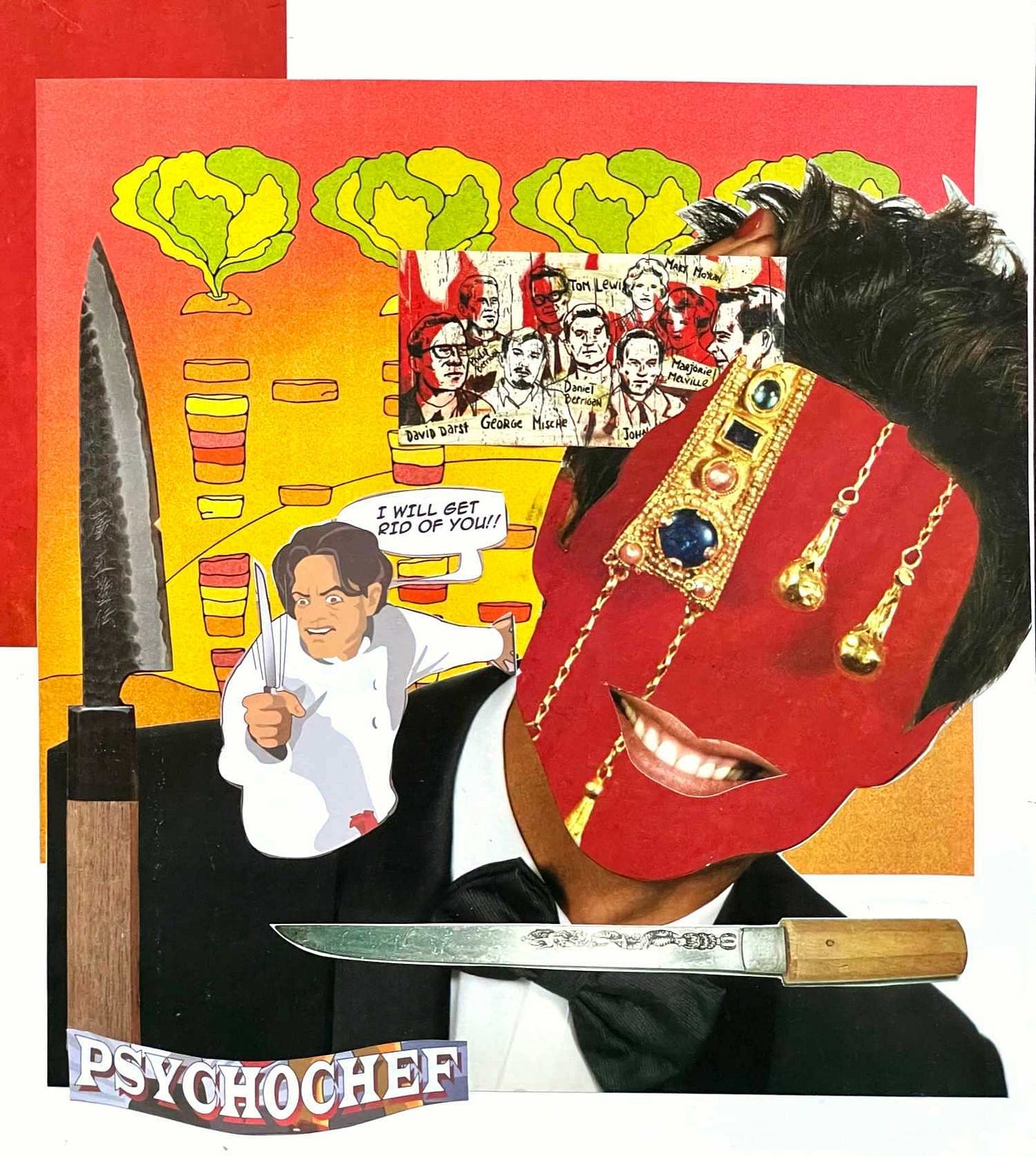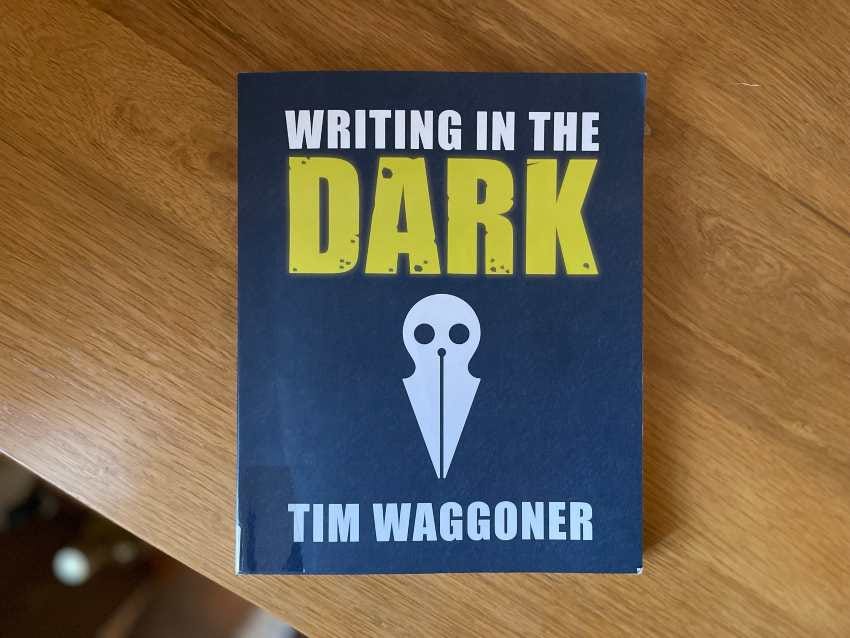I have a To Be Read list specifically for writing craft books whose titles I’ve added from online articles on “best books about writing,” podcast recommendations, or suggestions by authors of other writing books I read and liked. That’s how I came to Writing in the Dark by Tim Waggoner. It appeared on my TBR list who knows how long ago and from what recommendation, but a month ago, when I was in the mood for a new book on writing craft—because it’s always a good idea to stretch what you know and improve—I didn’t look at what kind of book it was. I thought its title referred to writing into the dark of your intuition without plotting.
The first paragraph (sentence, really) gave it away:
“‘So, why do you write horror?’ It’s a question I’ve thought about a lot over the years, and it might surprise you to learn that I don’t have a definite answer—or at least not a single answer. I can, however, pinpoint specific moments in my life that led me to my love affair with all things dark and wonderful.”
Whoa. Horror? Turns out, Tim Waggoner has written nearly 50 horror novels and short stories, and Writing in the Dark is about writing an effective horror story. I don’t like horror; in fact it’s one of the few genres I purposefully steer well clear of (or so I thought). But, improving craft includes expanding your knowledge to other forms, techniques, and genres you normally wouldn’t try. No one gets anywhere by refusing to change routine or habit and by putting life (or writing) on autopilot. It also came at a serendipitous time just after I bought The Anatomy of Genres by John Truby, which I’m excited to read, so it would seem that all signs pointed to expanding my writer’s repertoire by digging into genre. So despite my doubts, I committed to reading Writing in the Dark front to cover.
Why You Might Mistake Horror as Something Else
It turns out, I do like horror. I’ve loved it for a long time and, in fact, you might like horror too without realizing it.
It’s my fault. I thought “horror” meant Saw—gratuitous violence and gore. But that’s only one kind of horror. In fact, horror is the first genre discussed in The Anatomy of Genres because it is, at its core, the most basic and fundamental story there is: life vs death. It’s an ancient genre, coming into being the moment humans told stories about monstrous lions and wolves they bested and the unlucky one in the tribe who failed. Horror includes ancient Greek mythologies and A Christmas Carol (bet you didn’t think of that! Who wasn’t terrified of the Ghost of Christmas Future?!). Horror is also, of course, Friday the 13th, Deliverance, and Carrie.

In Writing in the Dark, I quickly learned that there are many different types of horror, some of which define any number of my all-time favorite books, movies, and authors. Psychological horror may have an unreliable narrator (Gone Girl); supernatural has your classic vampires and werewolves; literary includes authors like Victor Lavalle and Peter Straub; quiet or subtle has the creeping dread I love (most recently, Wonderland); surreal includes House of Leaves and Donnie Darko; and then, of course, you have extreme or body horror (where you’ll find the splatter; this is the horror-type I mistakenly thought was all horror, and which I have no stomach for).
Digging even deeper, I discovered the subgenres of horror: dark fantasy (Ninth House, Stephen King’s latest Fairy Tale, Imajica), dark thriller, dark suspense, apocalyptic (I Am Legend, The Passage), survivor, Gothic, folk, social (The Stepford Wives)…and many more.
Remember: basic horror is about life vs death, but additionally, what sets it apart from pure suspense or thriller or any other subgenre it touches is another essential message at the heart of all horror:
“The Universe is not orderly and benign, and is in fact chaotic and malicious.” Writing in the Dark, Tim Waggoner
Whether or not your hero prevails over this chaotic and malicious universe is one reason you’re reading the book, but either way, all horror stories reveal this dark underbelly of a truth.
What Horror Has in Common with All Writing
At the end of each chapter, Tim Waggoner asks three successful horror writers the same two questions:
What makes good horror/dark fantasy/suspense?
What’s the best advice you can give a beginning writer of horror/dark fantasy/suspense?
Similar answers came up time and again, and often they hold true for any kind of literature. Good horror/dark fantasy/suspense is successful only via eliciting emotion from your audience— dread or fear in horror’s case—and this only comes about if the readers care about your character. Therefore, writing believable characters that readers empathize with is as essential to good horror as it is to romance, mystery, thrillers, sci-fi, or anything else.
“Good horror begins with compelling characters rather than a scary situation, since fear is a subjective experience.” Gaby Triana
“I think it’s the human element. Without the human element, the monster—or the horrific aspects of the story—are mere props in a timeline.” Michael Knost
“Good horror is, perhaps counterintuitively, about empathy. When horror succeeds, it’s because the writer gave us a character to root for, to invest in and to love.” Joe Hill
The emotion, the fear, doesn’t have to be intense, either. This was maybe my biggest misconception I held before reading Writing in the Dark. Horror, I thought, was intensely disgusting and violent. If not, that simply meant it wasn’t horror. But that’s not true. There are five different types of emotion, or levels of fear, behind a good horror story and only one of them is slasher: dread (slow-building), terror (deep emotional and intellectual reaction), horror (immediate reaction), shock (surprise—this works best in movies as opposed to books), and only the last resort emotion is what I thought embodied all horror—disgust.
I’ve finally understood that horror is nuanced. Although to be honest, another reason I didn’t reflexively put down the book and say, “Horror is not for me, therefore this book is not for me,” was not only that all writers benefit from reading and writing widely, but because I’d already begun to suspect I like some horror, some of the time. When I picked up my first Clive Barker book, Imajica, I suspiciously eyed the word “horror” in its description—or perhaps it was a blurb about the famous horror writer himself. And there are more than a few scenes and several themes in The Magicians that are dark fantasy, which little did I know is a subgenre of horror. And the thrillers that hook me the most have an underlying message of an ordered world suddenly flipped upside down, like Gone Girl.
I thought I just liked books with complexity that touch on many aspects of the emotional range. Which is true—but horror was what was taking me there.
Stuff I like
I can’t recommend Writing in the Dark enough! I even did all the exercises at the end of each chapter, something I normally don’t do with the many writing craft books I read. But these started me down so many creative brainstorming paths and were a ton of fun.



